Acquisitions between artists and nomads
Author:
Don Duco
Original Title:
Aanwinsten tussen kunstenaars en nomaden
Publication Year:
2006
Publisher:
Pijpenkabinet Foundation
Journal:
Nieuwsbrief Pijpenkabinet
Description:
A carved meerschaum pipe and a metal pipe from the Touareg discussed as museum acquisitions.
Rembrandt pipe
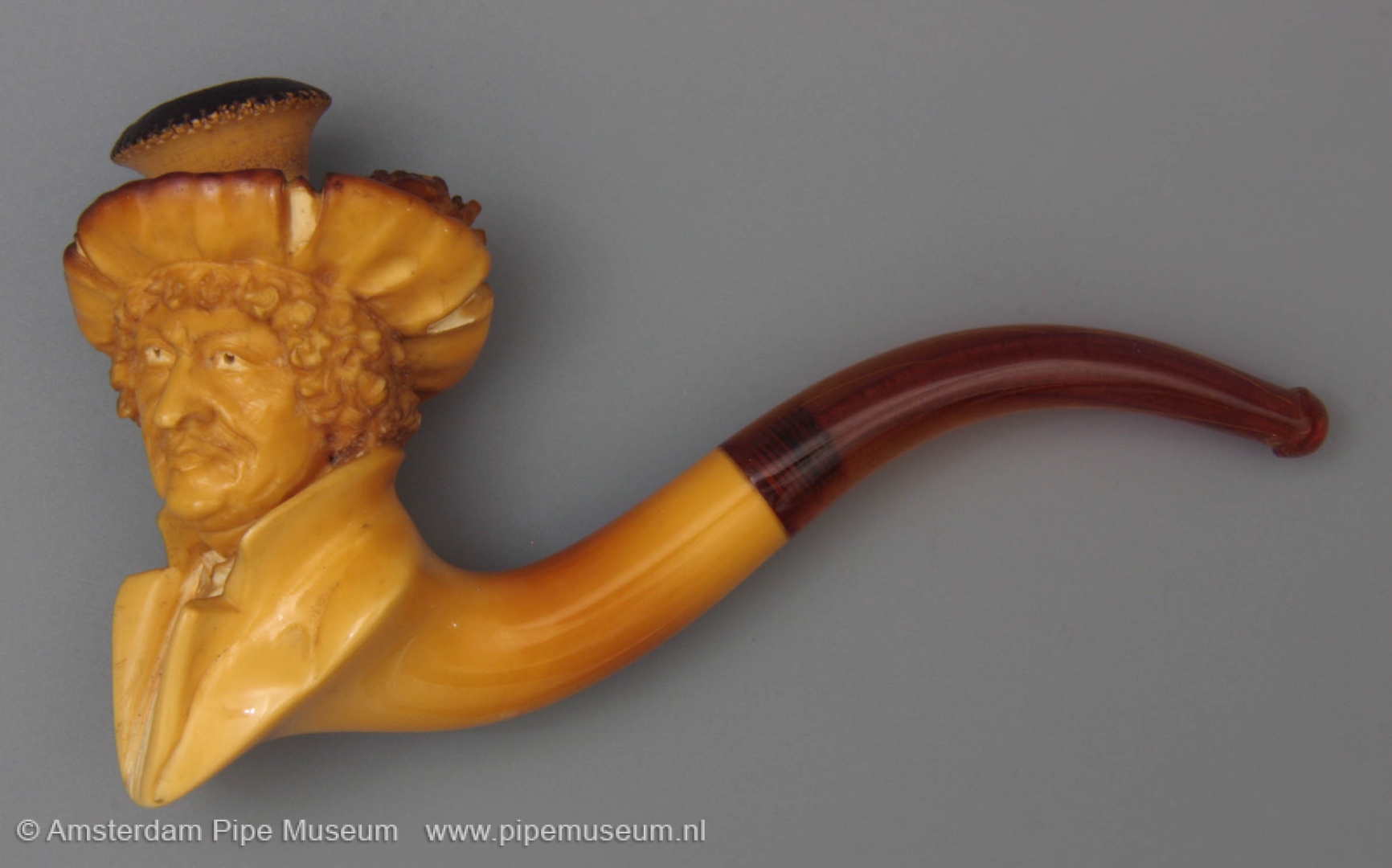
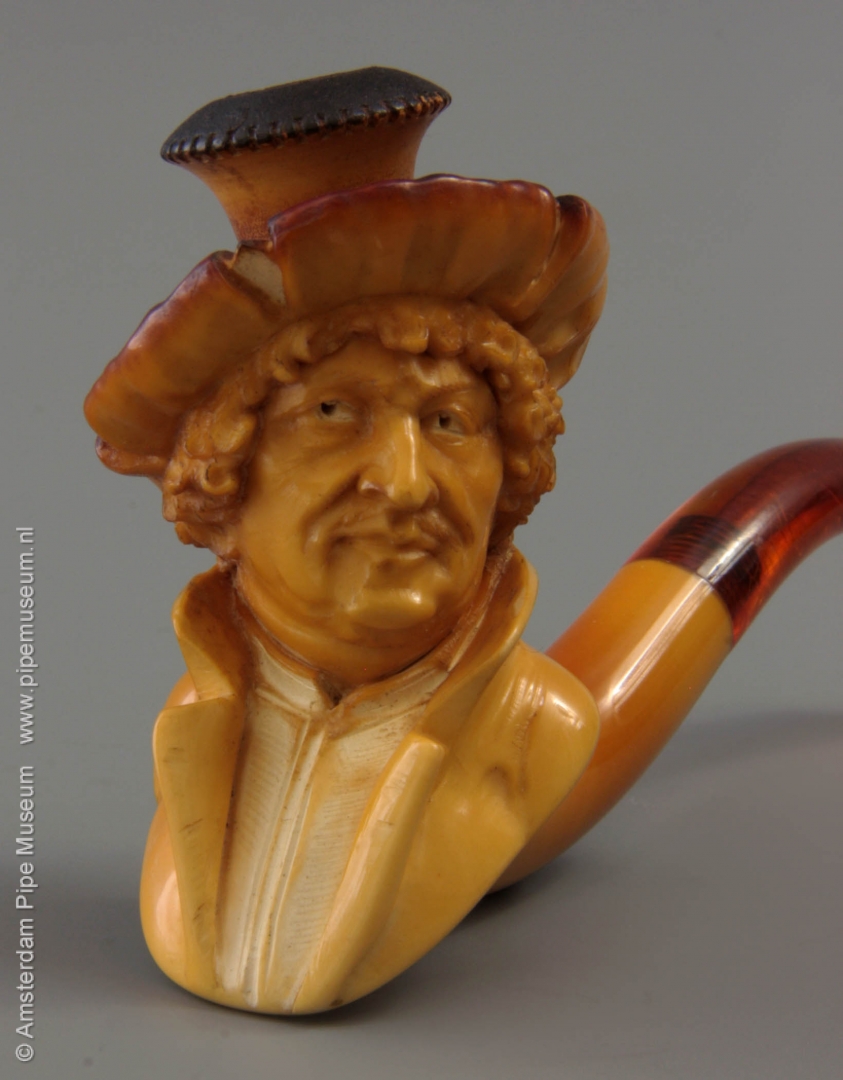
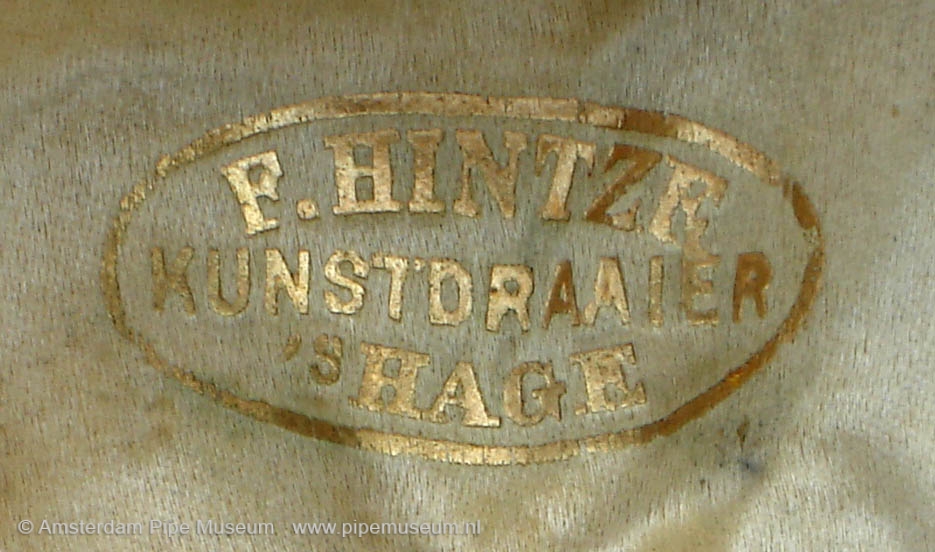
On the occasion of the 400-anniversary of Rembrandt Harmensz. van Rijn, the Rijksmuseum in Amsterdam organised a breakfast in its gardens. One of the attendees asked me whether we have a Rembrandt pipe. Knowing that Rembrandt was a non-smoker, it is unlikely that a personal pipe of his exists. At the other hand, the famous painter is depicted in pipes many times, both in porcelain painting, clay figuration and carved in meerschaum.
Just by coincidence, the very same evening of this breakfast, I was invited to The Hague to see a pipe collection that was offered for sale (Fig. 1). And one of the items proved to be a splendid portrait pipe of our national painter. After some negotiations the pipe was ours. It is a cigar holder in meerschaum, carved with the bust of Rembrandt including his velvet hat, seen in the r omantic way typical for the 1880-1920 period. A conical enlargement on top of his hat is meant to hold the cigar, just the way a cigar was smoked until the first World War and seen at thousands of pipes.
This pipe is a special one, not only for the quality of the carving, but also for its pedigree. The signature in the case says in a gold printed letter: "F. HINTZE KUNSTDRAAIER 'S HAGE" (F. Hintze, art turner in The Hague). Mr. Hintze is known form the archives as a talented meerschaum carver, originating in Germany. His daughter married in Holland Julius Richard Peukert. From 1906 onwards they had a shop in The Hague known as the “Pipe Palais”. After the death of her husband, the lady continued the trade, together with her son. In 1946 Jacobus van Oosten, one of her employees has taken over the business. Again it is his widow who continued, until 1969, when the shop was closed. The inventory was sold out and the remainders were taken over by another shopkeeper. It is this man who sold the Rembrandt pipe now to the Pijpenkabinet collection, which means that the full pedigree of this object from its creation till present day is known.
Amsterdam, Pijpenkabinet collections Pk 18.336.
Tuareg
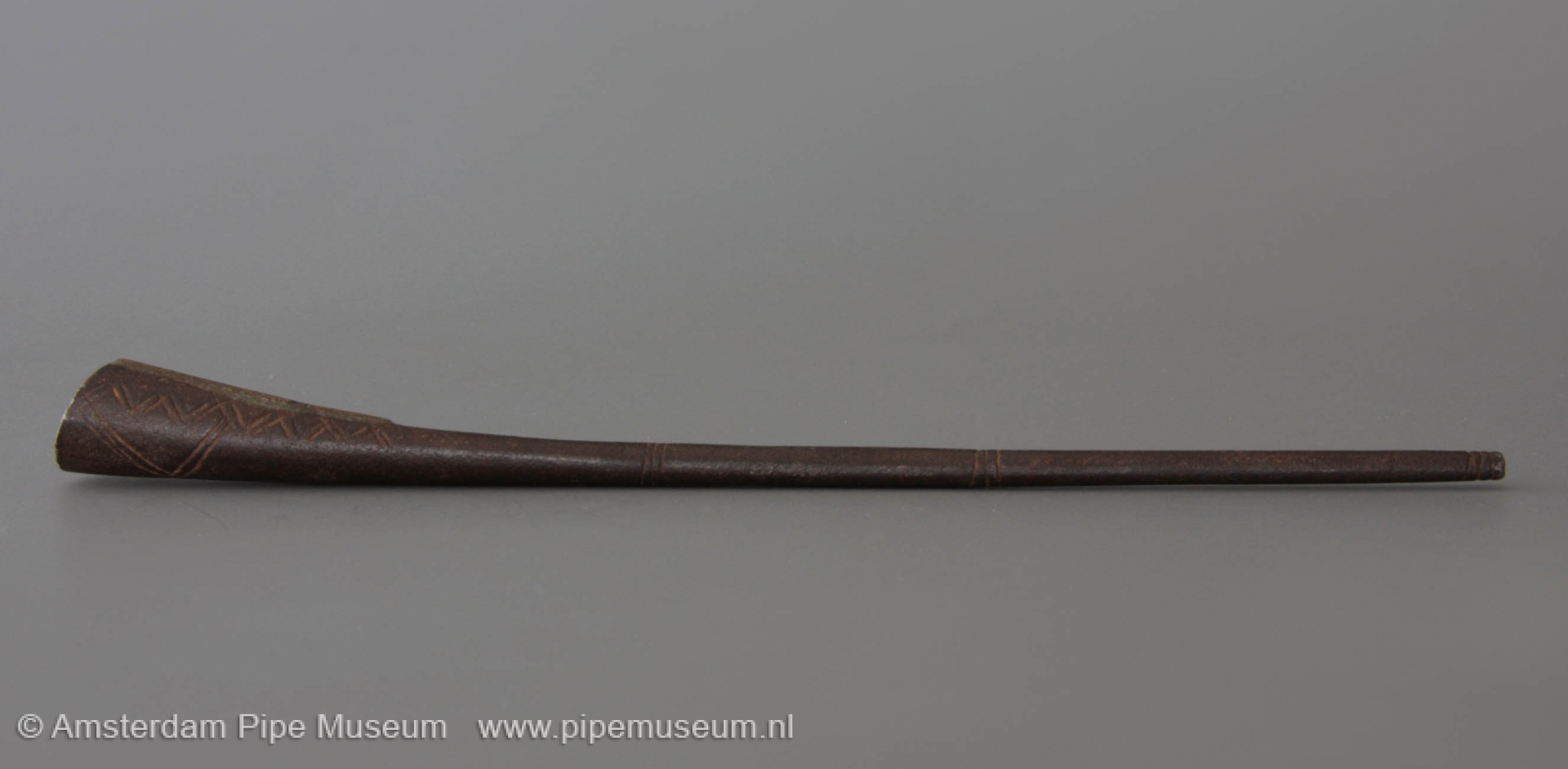
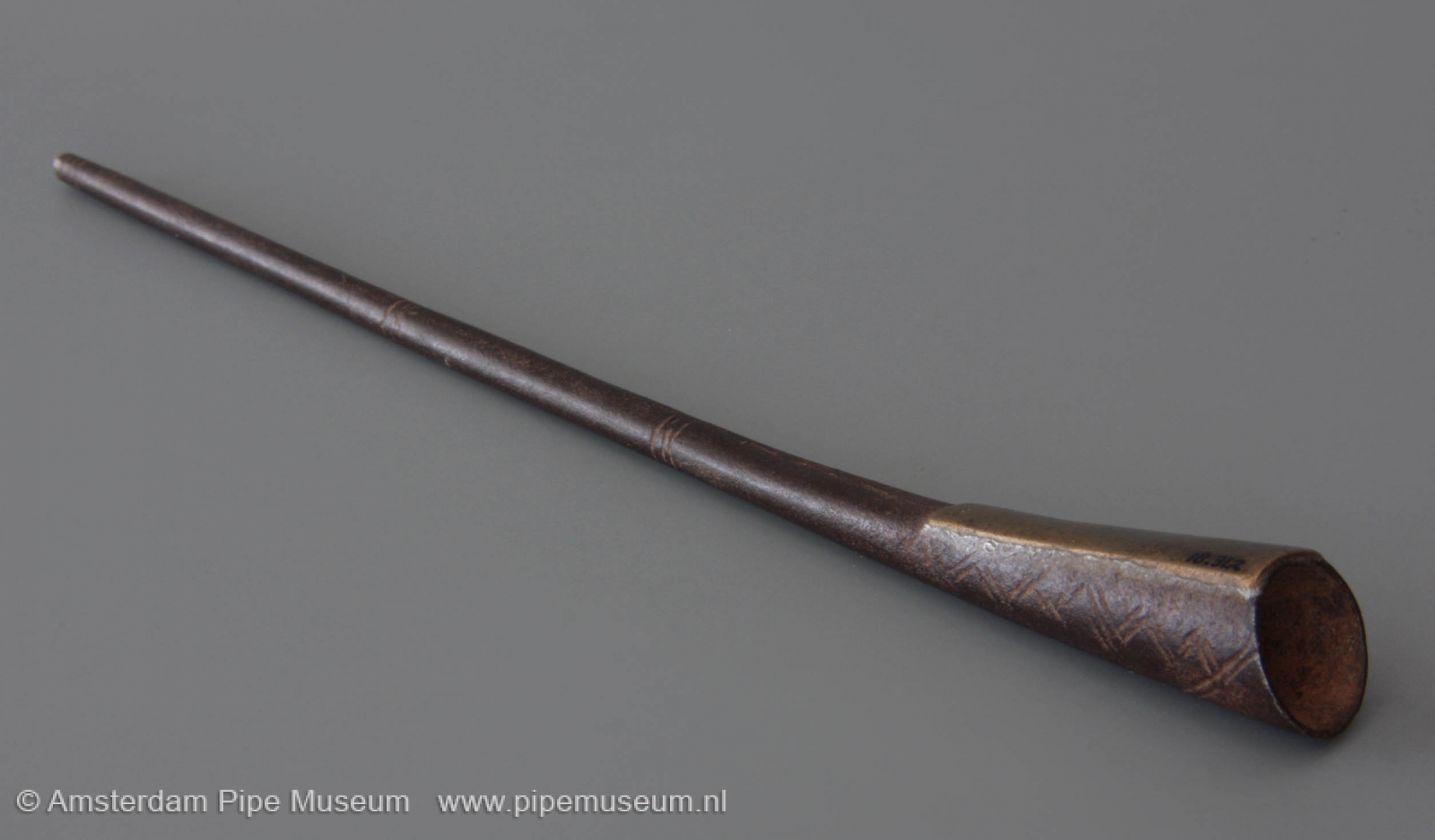
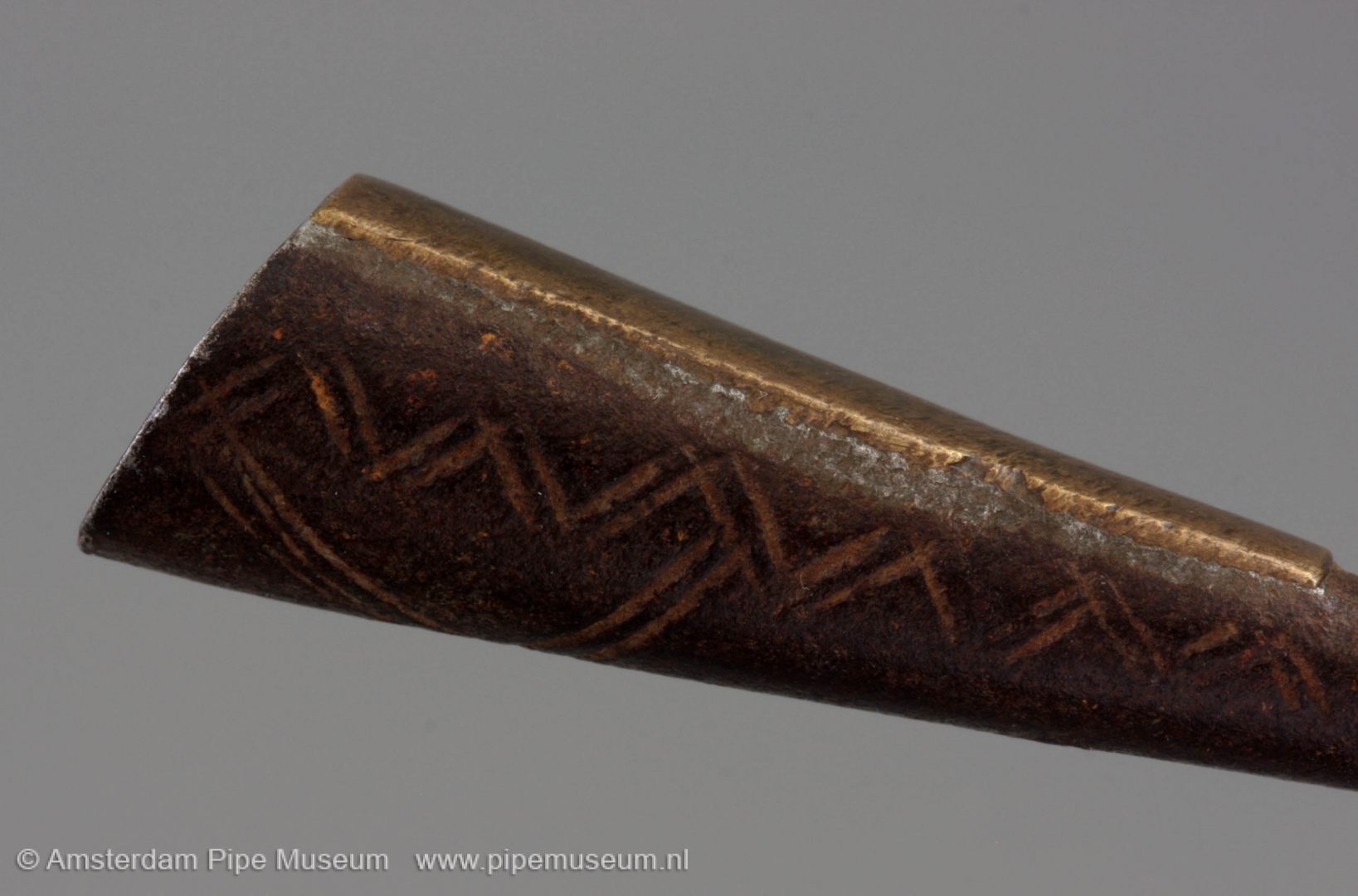
The Tuareg are a nomadic tribe in the driest parts of Africa, the Sahara desert. While most of the African pipes are huge and massive, the Tuareg pipes are small and elegant. While travelling they load all their possessions on camels, so all utensils should be movable and lightweight. Their pipes are made out of metal: iron with some brass ornaments, in a specific shape (Fig. 2). With a length of some 15 centimetres the pipe has a thin stem, widening towards the end into a funnel shape bowl. The end is cut off at 45 degrees, which adds to the elegance of the overall design. This so-called tubular pipe has no clear distinction between bowl and stem part, except for the diameter growing towards the end.
The illustrated pipe is added recently to the Pijpenkabinet collection. It is 18 centimetres in length, made out of iron with a square brass plaque joint onto its surface. Some engravings in a zigzag, several concentric rings and some cross lines make the decoration. A simple form, a strong shape and scarce decoration make a pipe that is fully characteristic for its origin.
Amsterdam, Pijpenkabinet collections Pk 18.312.
© D.H. Duco, Pijpenkabinet Foundation, Amsterdam - the Netherlands, 2006.